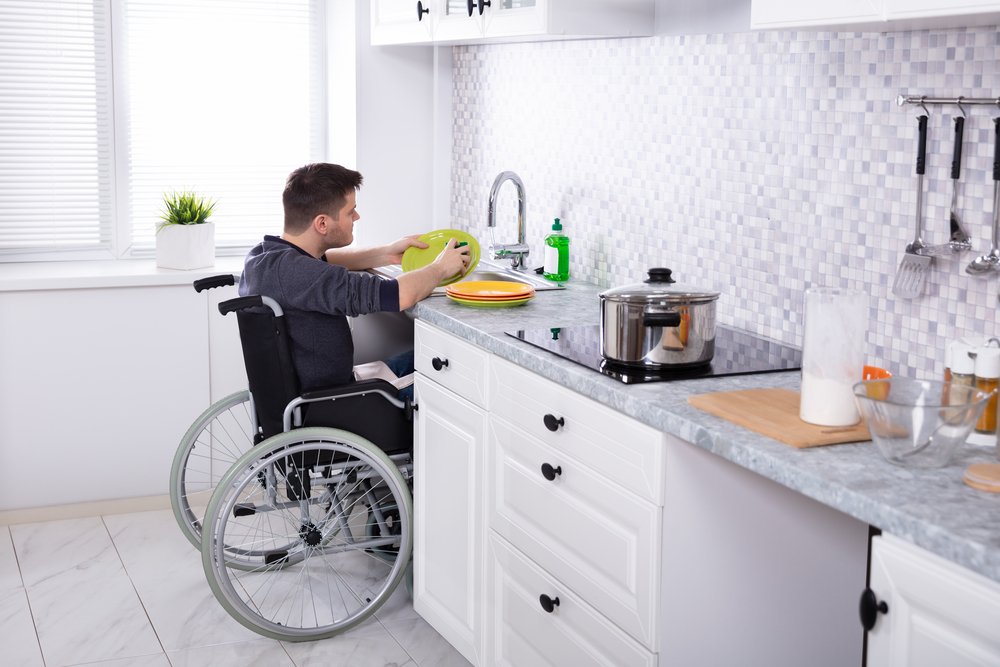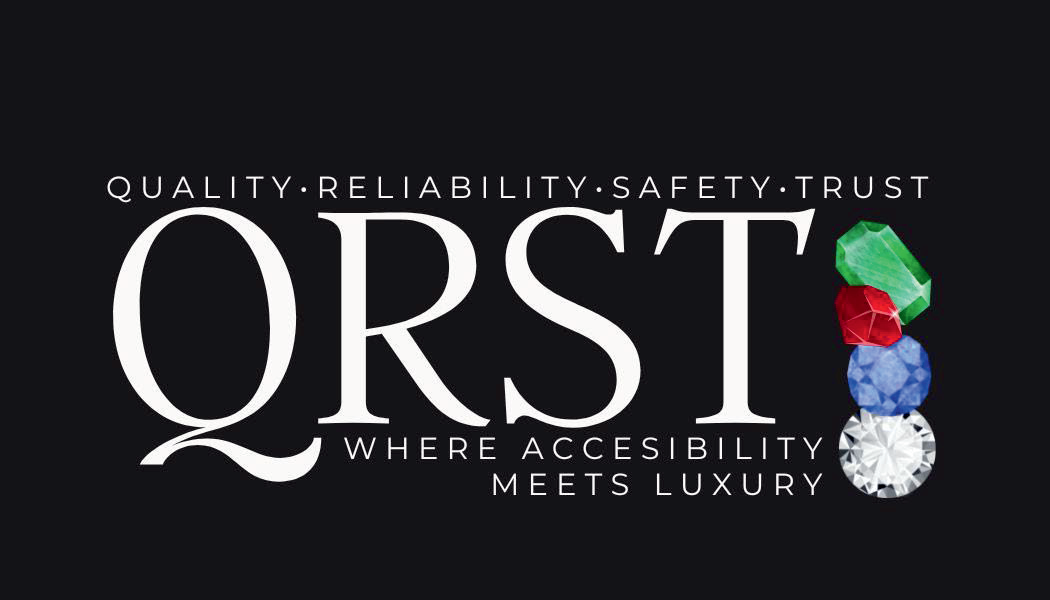Within the dynamic realm of the DMV, a journey unfolds into the heart of accessibility through do-it-yourself (DIY) home modifications tailored for wheelchair users. This exploration delves into the innovative spirit that drives homeowners to adapt and transform their living spaces, fostering a seamless integration of mobility and comfort. From reimagining entrances to redesigning interiors, these DIY modifications empower wheelchair users to navigate their homes independently, unlocking a world of possibilities that champion inclusivity and redefine the meaning of ‘home’ in the vibrant tapestry of the DMV community.
Transforming Spaces: DIY Home Modifications for Enhanced Accessibility in the DMV:
QRST will Embark you on a journey of empowerment, DIY home modifications in the DMV redefine accessibility for all.

1. Empowering Independence: DIY Home Modifications for Wheelchair Users in the DMV
Empowering individuals with mobility challenges, DIY home modifications offer a sense of agency and comfort. From simple adjustments to more complex renovations, these modifications enable wheelchair users in the DMV to navigate their homes with greater ease. By focusing on creating accessible entrances, adapting pathways, and enhancing room layouts, wheelchair users gain the freedom to move independently and participate fully in daily activities. DIY modifications not only enhance accessibility but also contribute to a sense of ownership and personalization, fostering a living space that reflects the user’s preferences and needs.
2. Navigating Spaces: Creating Wheelchair-Friendly Entrances and Exits at Home
Wheelchair users in the DMV can enhance home accessibility by focusing on creating wheelchair-friendly entrances and exits. Ramps with appropriate slopes, handrails, and smooth surfaces ensure smooth transitions in and out of the house. By eliminating obstacles and providing proper signage, these modifications promote safe and independent movement. This transformation not only eases daily routines but also allows individuals to welcome guests and engage with the community with confidence.
3. Open Pathways: Adapting Hallways and Corridors for Smooth Wheelchair Movement
Hallways and corridors serve as vital pathways within the home, and adapting them for wheelchair accessibility is crucial. Removing clutter, widening doorways, and ensuring even flooring contribute to unobstructed movement. Creating sufficient turning space at corners and intersections enhances maneuverability. With these adjustments, wheelchair users can navigate their homes seamlessly, fostering a more inclusive and convenient living environment in the DMV.
4. Kitchen Transformation: Making Culinary Spaces Accessible for Wheelchair Users
The kitchen is a central hub of daily life, and making it accessible for wheelchair users in the DMV is essential. Lowered countertops, adjustable cabinets, and accessible appliances facilitate independent cooking and meal preparation. Strategic storage solutions ensure that essentials are within reach. These modifications not only promote self-sufficiency but also encourage engagement in culinary pursuits, fostering a sense of accomplishment and well-being.
5. Bathroom Revamp: Essential Modifications for Wheelchair-Friendly Bathrooms
Bathrooms are spaces where accessibility is paramount, and DIY modifications can greatly enhance comfort and safety. Installing grab bars, lowering sinks, and ensuring roll-in showers create an environment where personal care routines are manageable and dignified. Non-slip surfaces and appropriate lighting further contribute to a secure bathing experience. By transforming bathrooms into wheelchair-friendly sanctuaries, individuals in the DMV gain increased confidence and independence in their daily lives.
6. Rethinking Ramps: Building Inclined Surfaces for Seamless Home Accessibility
Ramps play a pivotal role in home accessibility, and DIY solutions can provide functional and aesthetic benefits. Constructing sturdy and well-designed ramps ensures safe transitions between different levels of the home. Attention to slope, materials, and handrails guarantees a user-friendly experience. By incorporating ramps that harmonize with the architectural aesthetics, homeowners in the DMV can achieve both practicality and visual appeal while promoting inclusion.
7. Furniture Adaptation: Making Living Areas Comfortable and Wheelchair-Accessible
Adapting furniture layouts and designs is a key aspect of enhancing home accessibility for wheelchair users in the DMV. Raising furniture to an appropriate height, selecting chairs with proper support, and ensuring unobstructed pathways enhance comfort and maneuverability. A thoughtfully designed living space allows individuals to engage with family, friends, and activities without barriers. These adaptations create a warm and inviting environment that fosters social interaction and a sense of belonging.
8. Smart Home Solutions: Integrating Technology for Enhanced Accessibility
Advancements in smart home technology offer unique opportunities to enhance accessibility for wheelchair users in the DMV. Voice-activated systems, remote-controlled lighting, and automated door openers can be integrated to create a seamless living experience. With the ability to control various aspects of the home environment through technology, wheelchair users can enjoy greater independence and convenience, making daily tasks more manageable and enjoyable.
9. Safe Haven: Ensuring Bedroom Accessibility and Comfort for Wheelchair Users
Bedroom accessibility is essential for overall well-being and relaxation. Adjusting bed heights, optimizing storage solutions, and ensuring clear pathways allow wheelchair users in the DMV to access their bedrooms with ease. Additionally, installing adjustable lighting and comfortable seating contributes to a restful environment. By creating a bedroom that accommodates individual needs, wheelchair users can enjoy a private sanctuary that supports their physical and emotional comfort.
10. Outdoor Retreats: Crafting Accessible Gardens and Terraces for Home Enjoyment
Enhancing home accessibility extends to outdoor spaces, where wheelchair users in the DMV can create accessible gardens and terraces. Raised garden beds, smooth pathways, and comfortable seating areas enable individuals to connect with nature and enjoy the outdoors. These modifications foster relaxation, recreation, and a deeper connection to the surrounding environment, enriching the overall quality of life and well-being for wheelchair users.
FAQs:
1. How can DIY home modifications enhance accessibility for wheelchair users in the DMV?
DIY home modifications offer wheelchair users in the DMV the opportunity to tailor their living spaces to their unique needs. By making adjustments such as creating ramps, widening doorways, and installing grab bars, individuals can transform their homes into more wheelchair-friendly environments. These modifications promote greater independence and freedom of movement, allowing individuals to navigate their homes with confidence. DIY projects empower homeowners to take an active role in improving accessibility, fostering a sense of ownership and personalization in their living spaces.
2. What are the benefits of DIY modifications compared to professional home accessibility renovations?
DIY modifications provide several advantages, including cost savings, customization, and a hands-on approach. While professional renovations may be necessary for complex changes, DIY projects allow wheelchair users to address smaller accessibility concerns efficiently. DIY modifications can be implemented at one’s own pace, adapting the home gradually to evolving needs. This approach encourages creativity and adaptability, ensuring that modifications align closely with the user’s preferences and lifestyle.
3. How do DIY home modifications contribute to a more inclusive living environment in the DMV?
DIY home modifications play a pivotal role in fostering inclusivity within the DMV community. By creating wheelchair-friendly entrances, adapting interior spaces, and incorporating smart technology, homeowners make their homes more accessible to individuals with mobility challenges. These modifications not only promote autonomy but also send a powerful message about the value of inclusivity. DIY efforts inspire others to consider accessibility in their homes, contributing to a broader culture of awareness and understanding. In this way, DIY home modifications become catalysts for positive change, creating a more inclusive and empathetic living environment for everyone in the DMV.
Conclusion:
As the DMV embraces the spirit of innovation, DIY modifications stand as a testament to the region’s commitment to inclusivity. These personalized adaptations not only enhance mobility but also infuse homes with comfort, functionality, and the unmistakable spirit of the individual. By fostering independence and breaking down barriers, DIY modifications in the DMV contribute to a living environment where everyone can thrive, regardless of mobility challenges. Through these transformative efforts, the DMV community evolves into a place where homes truly reflect the needs and aspirations of all residents, creating a legacy of accessibility and empowerment.
If you plan on stepping out Our professional wheelchair transportation in the DMV ensures reliable, safe, and accessible journeys for all. You can also go through our article to get some handy Tips for Planning a Wheelchair-Accessible Trip in Washington.
